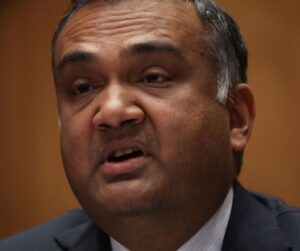Video-sharing platform YouTube is going through some changes in its leadership. Former CEO Susan Wojcicki announced Feb. 16 that she is resigning from her position to be replaced by Neal Mohan, the company’s chief product officer. Wojcicki’s resignation comes amid ongoing controversy over YouTube’s censorship and content-moderation practices. Conservatives and libertarians have taken the platform to task for applying its terms of service in a politically biased manner, an issue the former CEO has had to navigate for years. With this development, is there any chance things might change at the company?
Wojcicki Steps Down as YouTube CEO
In a blog post on YouTube’s website, Wojcicki announced that she was stepping down as the company’s CEO. “Today, after nearly 25 years [with Alphabet] here, I’ve decided to step back from my role as the head of YouTube and start a new chapter focused on my family, health, and personal projects I’m passionate about,” she said.
Wojcicki, who took the top spot at the video-sharing platform in 2014, will still work with the company in another capacity, which involves meeting with creators and coaching members of the staff. “This will allow me to call on my different experiences over the years to offer counsel and guidance across Google and the portfolio of Alphabet companies,” she wrote. “The time is right for me, and I feel able to do this because we have an incredible leadership team in place at YouTube,” she continued. “When I joined YouTube nine years ago, one of my first priorities was bringing in an incredible leadership team.”
CBS News noted that Wojcicki “has long-held ties to Google founders Larry Page and Sergey Brin, who she let work out of her Menlo Park, California, home upon founding Google.” She was also instrumental in Google’s decision to buy YouTube. During her stint as CEO, Wojcicki presided over the platform’s expansion and helped grow it into the most-used video-sharing site in the world. The company “now has more than 2.5 billion monthly active users and more than 500 hours of content are uploaded to the platform every minute,” according to CNBC.
But Wojcicki’s tenure as the company’s head honcho wasn’t all roses and sunshine. Under her leadership, the platform received mounting criticism over its content-moderation policies. On the right people have accused YouTube of censoring accounts based primarily on political bias. They contend the platform disproportionately silenced conservative content – especially during the COVID-19 pandemic.
Conversely, those on the left have taken issue with YouTube because it does not censor enough. They claim the company allows videos that promote hate speech, misinformation/disinformation, conspiracy theories, and ideas that radicalize users into harmful ideologies. These people contend the company should do more to remove this type of content from the site.
More of the Same?
Mohan, the technology executive taking the reins from Wojcicki, joined the company in 2013. He previously served as chief product officer and played a key role in rolling out such offerings as YouTube TV, YouTube Music, and YouTube Premium.
So how will the new CEO handle the company’s content-moderation practices?

Neal Mohan (Photo by Alex Wong/Getty Images)
Mohan has not yet commented on that question since taking over for Wojcicki. However, his past statements might shine a light on this mystery. During a 2021 interview with Axios, Mohan said policing content – especially during the COVID-19 pandemic – was good for business. The article explained how YouTube removed or demonetized content that conflicted with the Democrat-approved narrative on the coronavirus and vaccines. “The work is never done,” he claimed. “I have learned that there is always a new vector of misinformation that will pop up.”
The Axios article also noted that only about 0.16-0.18% of users actually see information on the platform that violates the rules. This means that YouTubers who create content that does not jibe with the progressives who work at the company are being severely throttled. In an interview with Protocol, Mohan explained that YouTube has “removed on the order of thousands of videos since the beginning of this crisis.”
So it is safe to say that Mohan is as big a fan of biased censorship as his predecessor, which likely means nothing will change under his leadership. However, other video-sharing services that avoid censoring political views are rising up to compete with YouTube. Rumble is one such example, and it has more than a million users. That’s a small audience compared to YouTube’s two billion user count – but it is a start and a place for conservative and libertarian content creators to have a voice.
Do you have an opinion about this article? We’d love to hear it! If you send your comments to [email protected], we might even publish your edited remarks in our new feature, LN Readers Speak Out. Remember to include the URL of the article along with your name, city, and state.
Please respect our republishing guidelines. Republication permission does not equal site endorsement. Click here.

